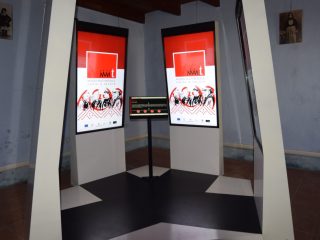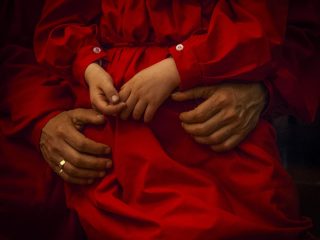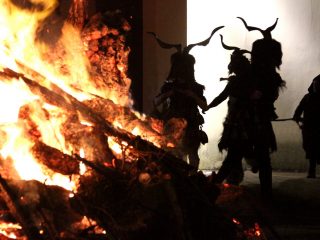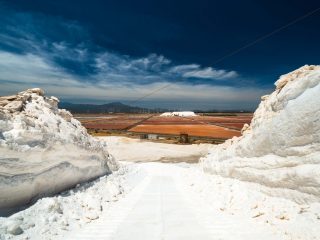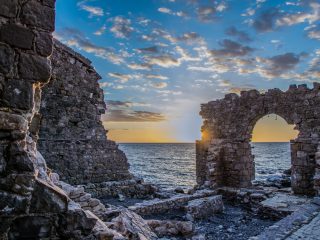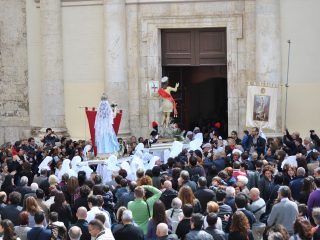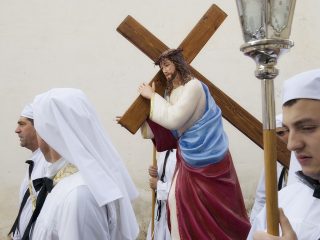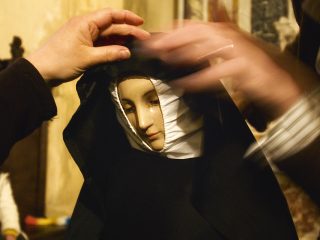La Discesa dei Candelieri (The Descent of the Candlesticks), in the dialect of Sassari “Faradda”, has been held each year on the 14 August for more than five centuries; it is a recurring event much loved by those on the island and attracts around one hundred thousand visitors each year from all over the world.
In 2013, it was included in UNESCO’s Representative List of the Intangible Cultural Heritage of Humanity, together with three other celebrations with Pasos (floats carried on the shoulder) in Italy (the Festa dei Gigli di Nola, the Varia di Palmi and the Macchina di Santa Rosa di Viterbo).
Some documents date the Faradda as far back as the XIII century. It seems that it was inspired by a similar ritual held at that time in Pisa, where devotees carried a votive candle in procession inside wooden tabernacles. Sassari, at that time allied with Pisa, took part with an offering to the Virgin Mary; according to legend, the ritual also began to be practised in Sassari following a promise made to the Madonna who, in 1528, brought an outbreak of the plague to an end.
The key players in the Discesa are the Gremi, or rather the descendants of Sardinia’s ancient arts and crafts guilds, who carry the candlesticks during the procession. The candlesticks don’t generally weigh more than four quintals and are split into 3 parts: capital, frame and base; the capital is decorated with colourful ribbons while the frame, which is about 3 m tall and 40 cm in diameter, depicts an image of the patron saint of the Gremio. The base is made of wood with four poles which, during the procession, will be held up by the eight gremianti (guild representatives). The celebrations start at dawn on the 14th with the dressing: each Gremio decorates their own candlestick with flowers, garlands and flags; sometimes elements are added characterising the Gremio, for example, the gremio of the Massai (landowners) and that of the farmers add wheat ears, tailors add scissors, cobblers and blacksmiths add a hammer.
The dressing takes place at the headquarters of the Gremio or the home of the Candlestick worker, that is, the gremiante in charge of the votive candle. About 4 pm in the afternoon, they head to the Piazza di Castello; after mass in the Church del Rosario, at 6 pm the Descent towards corso Vittorio Emanuele II begins. The band leads the procession followed by the eleven Candlesticks lined up in order from the most modern to the oldest: butchers, blacksmiths, stone breakers, wayfarers (ancient transporters and travelling salesmen), farmers, carpenters, greengrocers, cobblers, tailors, builders and the massai (ancient landowners). During the procession, the eight carriers of each votive candle perform a kind of dance to the rhythm of the drummers, turning the candlesticks around themselves and among the crowd which cheers on the gremianti. It is a performance which requires incredible physical strength from those carrying the candlesticks.
Halfway through the procession, a stop is made at the Teatro Civico, where the Palazzo di Città once stood; here the Mayor meets the gremio of the massai for the swearing-in ceremony of the new senior worker who will be in charge of organising the ritual next year. This is followed by the “l’intregu”: the mayor and the gremianti exchange investitures, or rather, the gremio’s flag and the city council’s standard. Lastly, the mayor makes the traditional “a zent’anni” toast. The procession continues through the entire old city centre, moving along corso Vittorio Emanuele II. Each year, the Gremio of builders diverts the procession towards largo Porta Utzeri where one of the city’s entrances once stood and through which the last person who died of the plague was carried out. This is a good omen to protect the city from a new epidemic. At midnight, the Candlesticks reach the Church of Santa Maria di Betlem, where the benediction of the blessed sacrament and the dissolution of the promise are held. First to enter the church are the local dignitaries, welcomed by the caretaker, then the gremi in reverse order compared to the procession; the gremio of builders rejoins the rest of the procession for the final celebrations.








